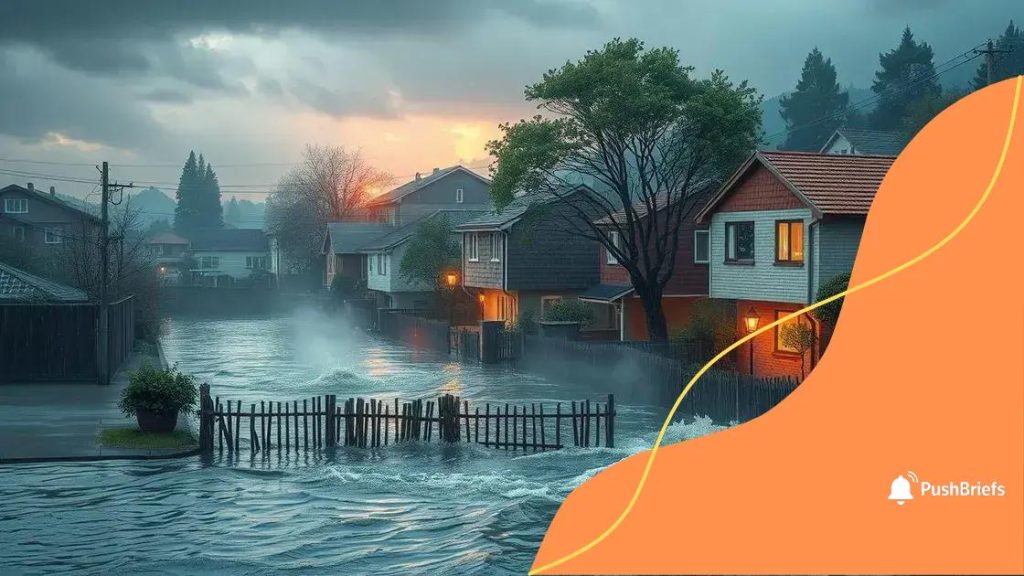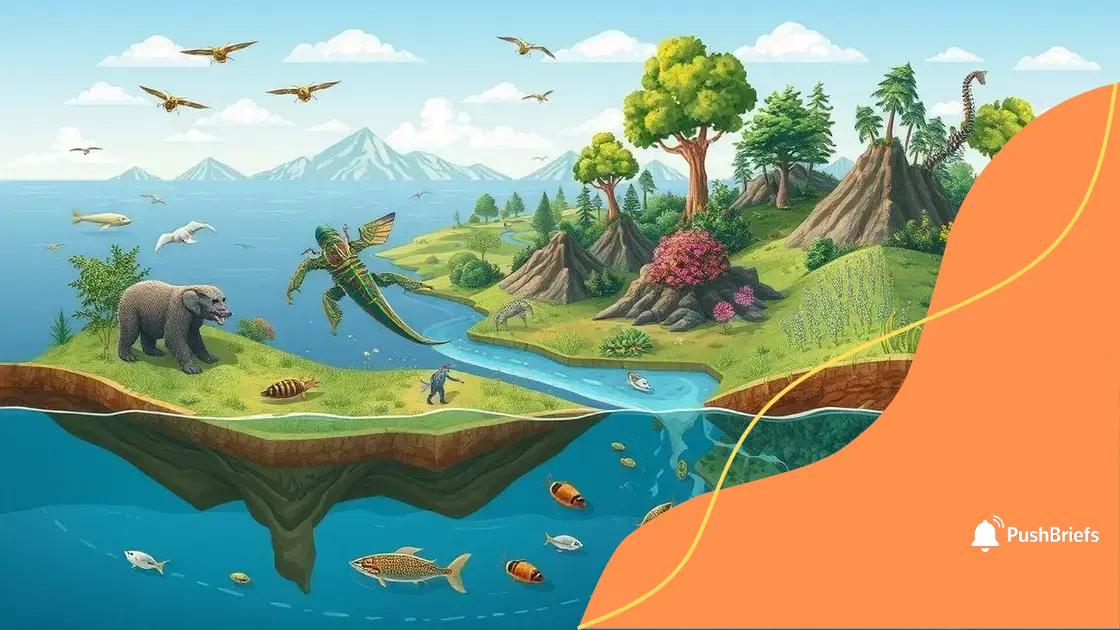The effects of climate change are apparent: what you should know

Combatting climate change involves reducing energy consumption, adopting sustainable transportation, supporting local products, and advocating for effective policies to ensure a healthier planet for future generations.
The effects of climate change are apparent in our everyday lives. Have you noticed unusual weather patterns or shifting seasons? These changes aren’t just trends; they reflect significant challenges ahead. Let’s dive into what this all means for us.
Understanding climate change
Understanding climate change is essential for everyone. It affects our world in many ways, from rising temperatures to unpredictable weather. Let’s dig into the basics and what they mean for us.
The causes of climate change
One major factor in climate change is the increase of greenhouse gases in the atmosphere. These gases trap heat, leading to higher global temperatures. Some of the biggest contributors include:
- Carbon dioxide from burning fossil fuels
- Methane from agriculture and landfills
- Nitrous oxide from fertilizers
How it impacts weather patterns
As we learn more, we notice that climate change leads to extreme weather events. You might have seen more floods, hurricanes, or heatwaves lately. This change can be alarming and often leads to devastating effects on communities and ecosystems.
In addition to extreme events, many areas face prolonged droughts or shifting seasons. This inconsistency can affect food production and water supplies, which are vital for survival. It’s essential for people to be aware of these shifts.
Being informed helps us understand how to tackle this issue. Every small step counts towards making a difference, whether it’s reducing waste or using renewable energy.
What you can do
Each person can make a positive impact. Here are some ways to contribute:
- Walk or cycle instead of driving
- Reduce, reuse, and recycle
- Support clean energy options
- Educate others about climate issues
Understanding climate change allows us to recognize its urgency and act accordingly. By making informed choices, we can help shape a healthier planet for future generations.
The science behind shifting climates
The science behind shifting climates involves understanding complex systems. It helps us grasp how our planet changes over time. Climate science studies physical patterns and their effects on the world around us.
Understanding greenhouse gases
One major factor contributing to climate change is the accumulation of greenhouse gases. These gases, including carbon dioxide and methane, trap heat from the sun, leading to a warmer atmosphere. As a result, we see changes in weather patterns.
The levels of these gases have surged since the Industrial Revolution. This rise is largely due to human activities such as burning fossil fuels and deforestation. The connection between increased greenhouse gases and climate change is strong and scientifically backed.
Climate models and predictions
Scientists use complex models to predict future climate changes. These models simulate how different factors can affect the climate over decades or even centuries. By analyzing data, they can forecast potential outcomes and give us a clearer picture of what might happen.
- Temperature rises are projected to continue.
- Extreme weather events will likely increase.
- Sea levels may rise, affecting coastal areas.
Also, understanding these models helps us make better decisions today. The data can inform government policies and help individuals take action against climate change.
The impacts of shifting climates go beyond just weather. Ecosystems are also affected. Animals and plants may struggle to adapt to rapid changes. For instance, some species may migrate to cooler areas, disrupting local environments.
Feedback loops in the climate system
Another aspect is the feedback loops created by climate change. As temperatures rise, ice melts at an accelerated rate. This melting reduces reflective surfaces, causing more heat to be absorbed. This process further warms the planet and accelerates climate change, creating a cycle that is hard to break.
Being informed about the science behind shifting climates is crucial. It enables us to understand the urgency of tackling climate change and helps encourage collective action.
Real-world effects on ecosystems

Real-world effects on ecosystems due to climate change are profound and troubling. As temperatures rise, habitats are threatened, and species face new challenges to survive. Understanding these impacts is essential for conservation efforts.
Species migration and loss
Many species are forced to migrate to cooler areas as their habitats warm. This shift can disrupt existing ecosystems and lead to new competition for resources. For example, fish are moving to deeper, cooler waters, which can affect local fisheries.
Some species may not be able to adapt quickly enough to these changes, leading to a decline in their populations. This loss can disrupt food chains and create imbalances in ecosystems.
Altered plant growth patterns
Climate change also affects plant life. As temperatures increase, the growing seasons for many plants change. Some may bloom earlier, while others may struggle to survive in warmer conditions. This shift impacts entire food webs, as many animals rely on plants for food and shelter.
- Crops may yield less in higher temperatures.
- Invasive species may thrive, outcompeting native plants.
- Pollinators like bees are affected, disrupting plant reproduction.
Additionally, changes in precipitation patterns can lead to droughts or excessive rainfall, further stressing plant ecosystems. These adaptations are critical for maintaining balance within various environmental systems.
Impact on freshwater and marine systems
Water ecosystems are not immune either. Warmer temperatures lead to reduced oxygen levels in water bodies, making it difficult for fish and other aquatic life to survive. Algal blooms can become more frequent, which can produce toxins harmful to wildlife and humans.
Moreover, as glaciers melt due to warming, freshwater supplies are impacted. Communities that rely on these water sources may face shortages, threatening both human and ecological health.
The effects of climate change on ecosystems are evident and alarming. We must understand these changes to take action and protect our planet’s biodiversity.
Impact on human health and safety
The impact on human health and safety due to climate change is a growing concern. As our climate shifts, we are witnessing a range of health risks that affect populations around the world. Understanding these risks helps us take appropriate action.
Increased heat-related illnesses
One immediate effect of rising temperatures is an increase in heat-related illnesses. As summers grow hotter, more people are at risk of heat exhaustion and heatstroke. Vulnerable populations, including the elderly and those with pre-existing health conditions, are especially affected.
Access to air conditioning and proper hydration becomes critical during extreme heat events. Communities must adapt to protect their citizens from these dangers.
Respiratory problems
Another significant issue is the deterioration of air quality. Higher temperatures can lead to increased levels of air pollution, including ground-level ozone. Poor air quality can trigger respiratory problems such as asthma and other lung diseases.
- More allergy sufferers due to longer pollen seasons.
- Increased hospital visits for respiratory issues.
- Vulnerable groups such as children and the elderly suffer the most.
It’s important for individuals and families to monitor air quality and take precautions during high pollution days.
Spread of infectious diseases
Climate change also influences the spread of infectious diseases. Warmer temperatures can extend the habitats of disease-carrying insects, such as mosquitoes and ticks. This leads to a higher risk of diseases such as malaria, dengue, and Lyme disease.
As these insects thrive in new areas, public health officials must be prepared to respond to outbreaks. Education on prevention methods is vital in affected regions.
Food and water safety
Safe drinking water is another essential issue affected by climate change. Increased flooding and heat can compromise water quality, leading to potential contamination. Food security is also at risk as climate change affects crop yields and food production.
Preparedness and community resilience become key factors in ensuring the health and safety of populations facing these challenges. The impact of climate change on our health cannot be ignored, and proactive measures are necessary.
Steps we can take to combat climate change
There are many steps we can take to combat climate change. Every action counts, whether it’s large or small. By working together, we can make a significant impact on our planet’s future.
Reducing energy consumption
One effective way to fight climate change is by reducing energy consumption. Simple actions in our daily lives can lead to less energy waste. Turning off lights when not in use, using energy-efficient appliances, and unplugging devices can make a difference.
Switching to renewable energy sources, like solar or wind power, also plays a crucial role in decreasing our dependence on fossil fuels.
Adopting sustainable transportation
Transportation significantly contributes to greenhouse gas emissions. By using public transport, biking, or walking when possible, we can lower our carbon footprint.
- Carpooling helps reduce the number of vehicles on the road.
- Choosing electric or hybrid cars can minimize emissions.
- Planning trips to combine errands saves fuel and reduces traffic.
Making these changes might seem small, but collectively they can have a big impact on reducing pollution.
Supporting local and sustainable products
Another step is to support local and sustainable products. Eating locally grown food can reduce transportation emissions. Additionally, choosing products with minimal packaging helps cut down on waste.
By purchasing from environmentally friendly companies, we encourage more businesses to adopt sustainable practices.
Advocating for policy changes
Individuals also have the power to advocate for policy changes. Writing to local representatives about climate issues can lead to significant changes at community and national levels.
Joining groups focused on environmental protection raises awareness and helps educate others about the importance of combating climate change.
Each of these steps contributes to a healthier planet. Embracing small changes in our daily lives can lead to a big difference in the fight against climate change.
FAQ – Frequently Asked Questions about Combating Climate Change
What are the simplest actions I can take to reduce my carbon footprint?
Simple actions include turning off lights when not in use, using energy-efficient appliances, and avoiding single-use plastics.
How does using public transportation help the environment?
Using public transportation reduces the number of cars on the road, lowering greenhouse gas emissions and traffic congestion.
Why is supporting local products important for the environment?
Supporting local products reduces transportation emissions and promotes sustainable agriculture within the community.
How can I advocate for climate change policies?
You can advocate by writing to your local representatives, joining environmental groups, and raising awareness in your community.
